Flowers have always fascinated people with their beauty and variety of shapes, colors, and scents. However, among the many species, there are those that astonish not only with their appearance but also with their unusual features. The world is full of unique flowers that seem like fantastic creations of nature. Let’s explore some of the most unusual flowers on our planet at joy-pup.com.
Snapdragon (Antirrhinum majus)
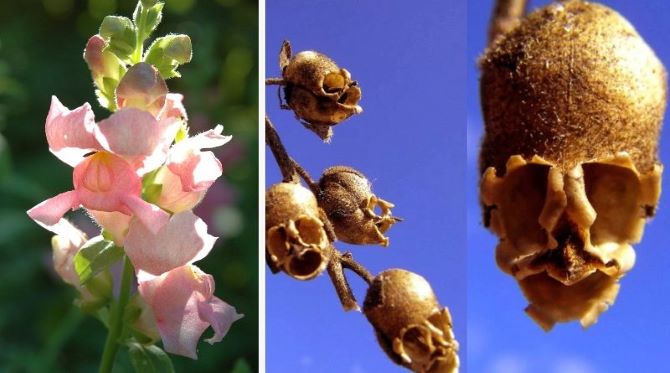
Snapdragon is a favorite plant among gardeners and florists due to its vibrant colors and pleasant fragrance. However, few people know that after the seeds mature, the plant leaves behind small “dragon skulls.” In ancient times, snapdragon was believed to have magical properties and could protect a home from evil spirits and curses. These small skulls symbolize not only the end of the plant’s life cycle but also remind us of the eternal cycle of life.
Baby in Diapers (Anguloa uniflora)
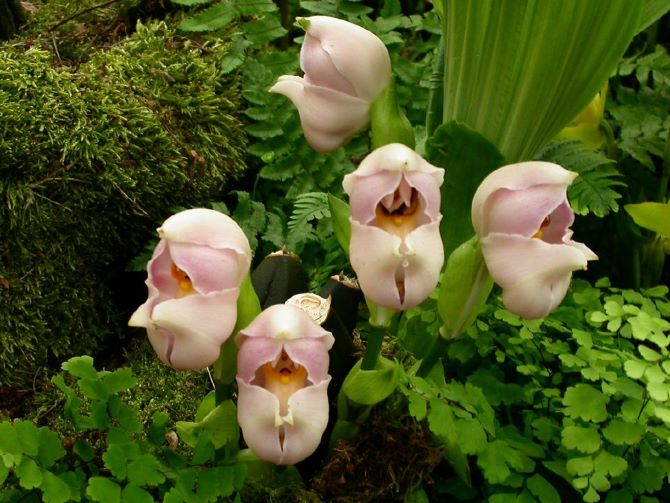
Anguloa uniflora is an unusual and rare species of orchid native to South America, especially the tropical forests of Colombia, Venezuela, and Peru. The plant received its amusing name due to the shape of its flowers: upon closer inspection, the petals resemble tiny babies wrapped in diapers. The flowers have a delicate fragrance and a unique creamy-white coloration, sometimes with a hint of yellow or pink. Anguloa uniflora also attracts attention with its large, almost spherical flowers, which can reach up to 10 centimeters in diameter and grow singly on long stems.
Darwin’s Slippers (Calceolaria uniflora)
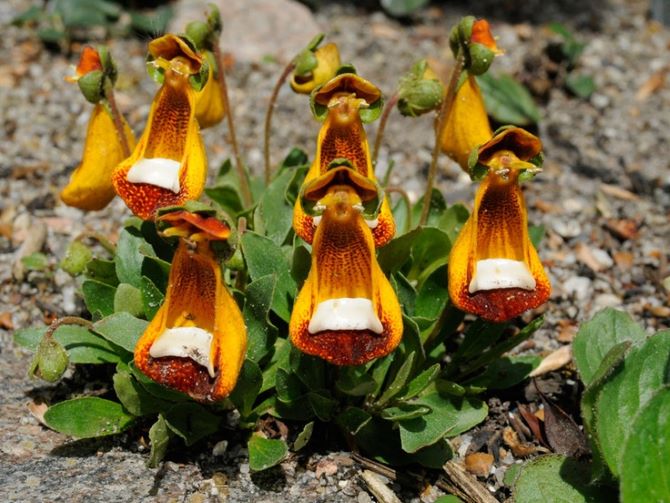
A unique and rare plant growing in the cold regions of South America. This miniature plant was discovered by Charles Darwin during his travels, from which it got its name. The flowers have a quirky shape resembling tiny slippers or pouches in bright orange and yellow, often adorned with white and red hues. These unusual flowers are not only aesthetically pleasing but also functional: their shape is designed to attract hummingbirds and small insects that pollinate the plant. Calceolaria uniflora’s ability to survive in harsh climatic conditions on rocky slopes is another noteworthy feature.
Monkey Orchid (Dracula simia)

An unusual orchid species whose flowers strikingly resemble the face of a small monkey. The plant is found in the mountainous regions of Ecuador, Colombia, and Peru at elevations of 1000 to 2000 meters above sea level. The unique genus name Dracula is related to the shape of the petals, which resemble long fangs or dragon’s teeth. The flowers of Dracula simia stand out not only for their shape but also for their unusual fragrance — they smell like ripe oranges! This rare plant prefers the cool, moist conditions of tropical forests and blooms year-round.
Heliconia, Lobster Claw (Heliconia)
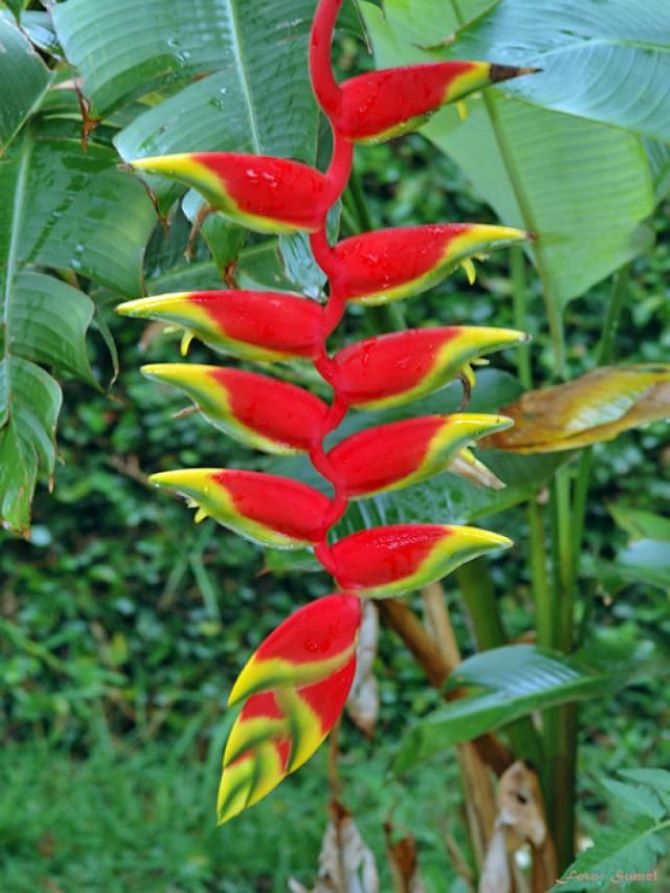
A bright tropical plant native to Central and South America, resembling lobster claws in appearance. One of the main features of heliconia is its large, vividly colored bracts, which can be red, orange, yellow, or pink. These unusual structures are often mistaken for flowers, but they actually serve a protective function for the small, less noticeable flowers hidden inside. The plant also differs in its rapid growth: it can reach several meters in height. Due to its striking appearance, heliconia has become popular in gardening and landscape design.
Corpse Flower (Titan arum)
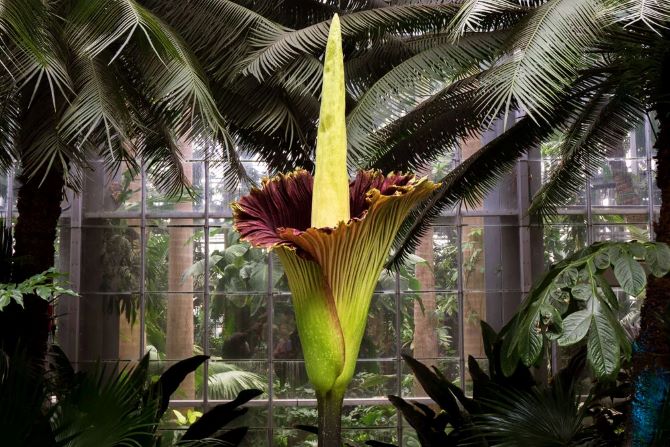
Titan arum (Amorphophallus titanum), also known as the “corpse flower,” is one of the most unusual and largest flowering plants on the planet. Its inflorescence can reach over 3 meters in height and weigh up to 70 kilograms. This giant is found in the tropical forests of Sumatra and is known for its strong, unpleasant odor reminiscent of rotting flesh. This smell attracts flies and carrion beetles that aid in pollination. Titan arum blooms extremely rarely — about once every 7-10 years, and the blooming lasts only a few days.
Passionflower (Passiflora incarnata)
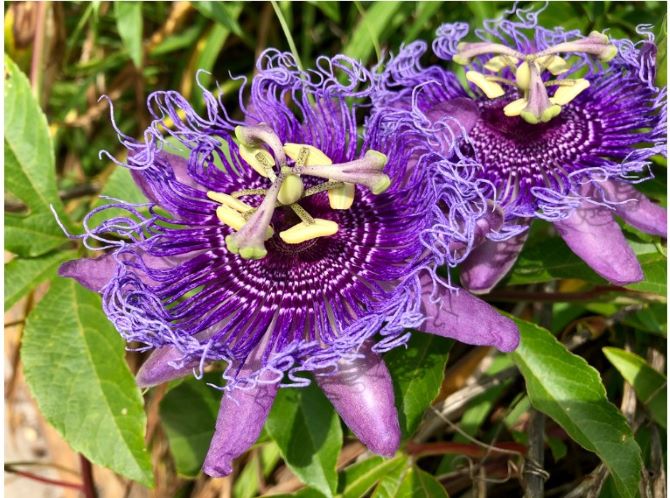
An amazing plant known for its intricate and exotic flowers that look like small works of art. The plant grows in North and South America and is famous for its bright purple petals surrounded by a crown of fine, thread-like appendages. The flower’s shape symbolizes the Passion of Christ, which gave it its name. Besides its beauty, passionflower is known for its edible fruits — passion fruit, which has a sweet and refreshing taste. Additionally, Passiflora incarnata has calming properties and is used in traditional medicine to treat anxiety, insomnia, and even pain.
Himalayan Poppy (Meconopsis betonicifolia)

The blue Himalayan poppy is one of the rarest and most captivating plants on the planet. It grows in the high-altitude regions of the Himalayas and dazzles with its extraordinarily bright, sky-blue petals, which look almost unreal against the harsh mountainous landscapes. The flowers can reach up to 10 centimeters in diameter and bloom on long stems, creating a spectacular sight. Despite its delicacy, the Himalayan poppy withstands the cold and windy conditions of high altitudes.
Fire Lily (Gloriosa superba)
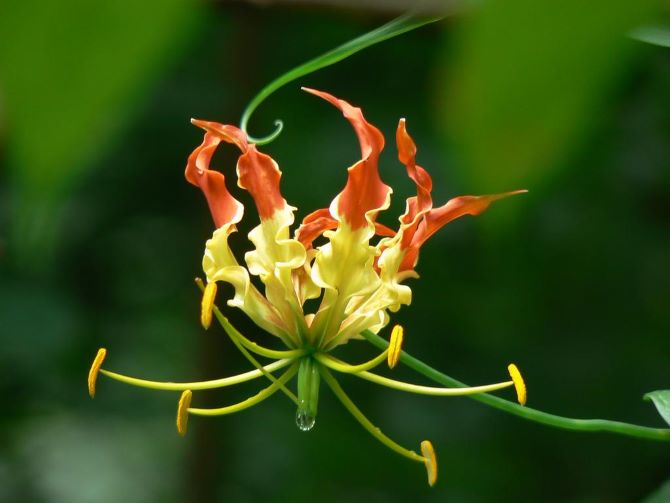
The fire lily is an exotic and vibrant plant known for its unusual flowers with curved petals that resemble tongues of flame. Native to the tropical and subtropical regions of Africa and Asia, this lily dazzles with its bright colors — from fiery red to orange and yellow. A feature of the plant is its ability to change color as the flower matures, making it even more striking. The fire lily is a climbing plant that can reach up to 3 meters in height, clinging to surrounding plants with its flexible stems. Despite its beauty, Gloriosa superba is highly toxic: all parts of the plant contain a poisonous substance called colchicine, dangerous to both humans and animals.
Devil’s Hand (Chiranthodendron pentadactylon)
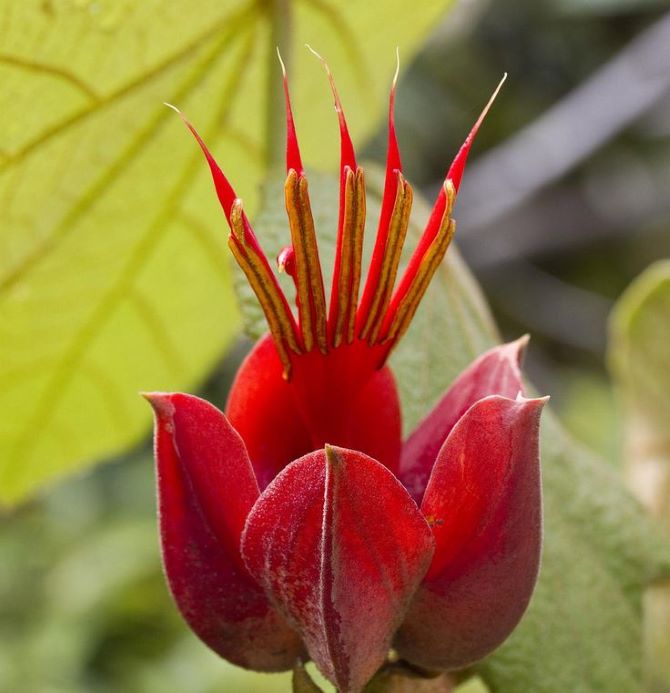
The devil’s hand is an unusual tree native to the mountainous regions of Mexico and Guatemala, which got its sinister name due to its peculiar flowers. The bright red flowers do indeed resemble a clawed hand with five “fingers,” giving the plant a mystical and even eerie appearance. In ancient times, this plant was revered by the Aztecs, who used it in religious rituals and considered it sacred. Besides its exotic appearance, the tree also has medicinal value: its parts were used in traditional medicine to treat various ailments.
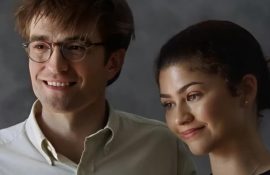
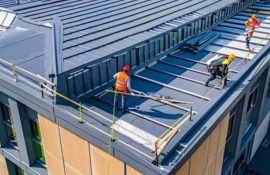





Only registered users can leave comments